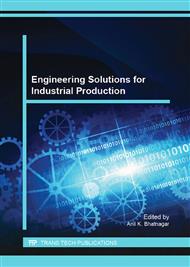[1]
EPRI. 1982. Transmission Line Reference Book – 345 kV and Above. Second Edition, Electric Power Research Institute. Palo Alto, CA.
Google Scholar
[2]
Z. Q. Bo, F. Jiang, Z. Cheng, X. Z. Dong, G. Weller, M. A. Redfern. Transient Based Protection for Power Transmission Systems. IEEE Power Engineering Society General Meeting, 2000, pp.1832-1837.
DOI: 10.1109/pesw.2000.847630
Google Scholar
[3]
G. Diendorfer, W. Shulz Ground flash density and lightning exposure of power transmission lines, Power Tech Conference Proceedings, IEEE, Bologna, (2003).
DOI: 10.1109/ptc.2003.1304476
Google Scholar
[4]
M. P. Yahya, Lightning Phenomena in Malasia. TNB Research Sdn Bhd. Seminar for ARSEPE´07. University Tenaga Nasional, 8-15 January, (2007).
Google Scholar
[5]
D. W. Kosy, V. S. Grinberg, and M. W. Siegel. Screening digital relay data to detect power network fault response anomalies. The Robotics Institute, School of Computer Science. Carnegie Mellon University, Pittsburgh, Pennsylvania 15213-3891 USA.
DOI: 10.1117/12.156380
Google Scholar
[6]
S. Rusck, Induced lightning over-voltages on powertransmission lines with special reference to the overvoltage protection of low-voltage networks, Royal Institute of Technology, PhD Thesis, Stockholm, Sweden, (1957).
Google Scholar
[7]
R. Thottappillil, M.A. Uman, Comparison of lightning return-stroke models, J. Geophys. Res., Vol. 98, No. D12, Dec. 1993, pp.22903-22914.
DOI: 10.1029/93jd02185
Google Scholar
[8]
C.A. Nucci et al., Coupling models for lightning-induced overvoltage calculations: A comparison and consolidation, Proc. of the 22nd Int. Conf. on Lightning Protection 1994, paper R3b-06, Budapest.
Google Scholar
[9]
Rubinstein, M and Uman, M. A. Method for calculating the electromagnetic fields from a known source distribution: Application to lightnings. IEEE Transaction on Electromagnetic Compatibility, Vol. 31, No. 2, pp.183-189. (1989).
DOI: 10.1109/15.18788
Google Scholar
[10]
Paula, S. C. M; Mendonca, R. G.; Neto, L. M.; Medeiros, C. A and Silva, R. V. Evaluation of performance of grounding electrics in conditions of lightning current. Canadian Conference on Electrical and Computer Engineering, Toronto, Canada, pp.737-742.
DOI: 10.1109/ccece.2001.933533
Google Scholar
[11]
Salari, J. C. and Portela, C. A methodology for electromagnetic transients calculation an application for the calculation of lightning propagation in transmission lines. IEEE Transaction on Power Delivery, Vol. 22, No. 1, pp.527-536.
DOI: 10.1109/tpwrd.2006.887101
Google Scholar
[12]
L. Dubè, I. Bonfanti, MODELS: A new simulation tool in the EMTP,. European Trans. on Electric Power, vol. 2, no. 1, pp.45-50, Jan. /Feb. (1992).
Google Scholar
[13]
ATP DRAW version 3. 5 for Windows 9x/NT/2000/XP Users'Manual.
Google Scholar
[14]
C. Chatfield and A. J. Collins,: Introduction to Multivariate Analysis, School of Mathematics, Bath University, Chapman and Hall, London-New York (1980).
Google Scholar
[15]
J. A. Morales, E. A. Orduña, C. Rehtanz,: Ultra high speed deterministic algorithm for identification of disturbance on transmission lines based on principal component analysis and Euclidean norm, submitted to International Journal of Electrical Power and Energy Systems.
DOI: 10.1016/j.ijepes.2016.01.043
Google Scholar
[16]
ANSI/IEEE Standard 100, IEEE Standard Dictionary of Electrical and Electronics Terms, IEEE Service Center, 445 Hoes Lane, Piscataway, NJ 08854.
Google Scholar


